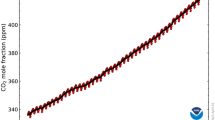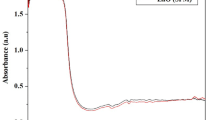Abstract
Shredded dust originated during mechanical dismantling of waste electrical and electronic equipments (WEEEs) is enriched source of some valuable metals which might be lost as unworthy waste. Composition analysis of shredded dust printed circuit boards (PCBs) revealed the presence of 12.75 mg g−1 copper (Cu) and 10.34 mg g−1 silver (Ag) along with some other metals (Fe, Ni, and Au). Low concentration of precious metal, such as gold (Au i.e., 0.04 mg g−1) classified this shredded dust as low-grade scrap. Despite low concentration of Au this e-waste can be considered as potential “secondary ore” to recover other valuable metals like Ag. To improve the efficiency of Ag bioleaching using Pseudomonas balearica SAE1, pretreatment of e-waste was done using cost-effective ferric chloride (FeCl3) chemical lixiviant. The concentration of FeCl3 lixiviant was optimized to recover Cu metal prior to bioleaching process. Bioleaching of Ag was done under optimized conditions by Pseudomonas balearica SAE1 using 100 mL Luria Broth (LB) medium, 5 g L−1 glycine, pH 9, temperature 30 °C and 150 rpm. 95% Cu was recovered with 1% FeCl3 prior to bioleaching. Ag solubilization was increased for treated e-waste (36%) as compared to untreated e-waste PCBs (25%). Prerecovery of Cu enhanced Ag bioleaching, as available cyanide was utilized by Ag metal. Therefore, this study provides an economical hybrid method to enhance retrieval of precious metal (Ag) by Pseudomonas balearica SAE1 with economic and ecofriendly redox lixiviant even from low-grade e-scrap.



Similar content being viewed by others
References
Arshadi M, Mousavi S (2015) Enhancement of simultaneous gold and copper extraction from computer printed circuit boards using Bacillus megaterium. Biores Technol 175:315–324
Arshadi M, Yaghmaei S, Mousavi SM (2019) Study of plastics elimination in bioleaching of electronic waste using Acidithiobacillus ferrooxidans. Int J Environ Sci Technol 16:7113–7126
Benzal E, Solé M, Lao C, Gamisans X, Dorado AD (2020) Elemental copper recovery from e-wastes mediated with a two-step bioleaching process. Waste Biomass Valorization. https://doi.org/10.1007/s12649-020-01040-2
Boxall NJ, Cheng KY, Bruckard W, Kaksonen AH (2018) Application of indirect non-contact bioleaching for extracting metals from waste lithium-ion batteries. J Hazard Mater 360:504–511
Brandl H, Bosshard R, Wegmann M (2001) Computer-munching microbes: metal leaching from electronic scrap by bacteria and fungi. Hydrometallurgy 59(2):319–326
Brandl H, Lehmann S, Faramarzi MA, Martinelli D (2008) Biomobilization of silver, gold, and platinum from solid waste materials by HCN-forming microorganisms. Hydrometallurgy 94(1):14–17
Chatterjee A, Abraham J (2017) Efficient management of e-wastes. Int J Environ Sci Technol 14:211–222
Chauhan G, Jadhao P, Pant KK, Nigam KDP (2018) Novel technologies and conventional for recovery of metals from waste electrical and electronic equipment: challenges and opportunities—a review. J Environ Chem Eng 6(1):1288–1304
Das S, Ting YP (2017) Improving gold (bio) leaching efficiency through pretreatment using hydrogen peroxide assisted sulfuric acid. Clean: Soil, Air, Water 45(6):1500945
Garg H, Nagar N, Ellamparuthy G, Angadi SI, Gahan CS (2019a) Bench scale microbial catalysed leaching of mobile phone PCBs with an increasing pulp density. Heliyon 5(12):e02883
Garg H, Nagar N, Ansari MN, Ellamparuthy G, Angadi SI, Akcil A, Gahan CS (2019b) Bioleaching of waste mobile phone printed circuit board in controlled redox potential compared to non-controlled redox potential. Int J Environ Sci Technol 17:3165–3176
Huang J, Chen M, Chen H, Chen S, Sun Q (2014) Leaching behavior of copper from waste printed circuit boards with Brønsted acidic ionic liquid. Waste Manag 34(2):483–488
Hubau A, Minier M, Chagnes A, Joulian C, Silvente C, Guezennec AG (2020) Recovery of metals in a double- stage continuous bioreactor for acidic bioleaching of printed circuit boards (PCBs). Sep Purif Technol 238:116481
Jagannath A, Shetty V, Saidutta MB (2017) Bioleaching of copper from electronic waste using Acinetobacter sp. Cr B2 in a pulsed plate column operated in batch and sequential batch mode. J Environ Chem Eng 5(2):1599–1607
Khatri BR, Sodha AB, Shah MB, Tipre DR, Dave SR (2018) Chemical and microbial leaching of base metals from obsolete cell-phone printed circuit boards. Sustain Environ Res 28(6):333–339
Kumar A, Saini HS, Kumar S (2018) Bioleaching of gold and silver from waste printed circuit boards by Pseudomonas balearica SAE1 isolated from an e-waste recycling facility. Curr Microbiol 75(2):194–201
Liang CJ, Li JY, Ma CJ (2014) Review on cyanogenic bacteria for gold recovery from E-Waste. Adv Mater Res 878:355–367
Natarajan G, Ting YP (2014) Pretreatment of e-waste and mutation of alkali-tolerant cyanogenic bacteria promote gold biorecovery. Biores Technol 152:80–85
Pardhan JK, Kumar S (2012) Metals bioleaching from electronic waste by Chromobacterium violaceum and Pseudomonas sp. Waste Manag Res 30(11):1151–1159
Priya A, Hait S (2017) Comparative assessment of metallurgical recovery of metals from electronic waste with special emphasis on bioleaching. Environ Sci Pollut Res 24:6989–7700
Sahni A, Kumar A, Kumar S (2016) Chemo-biohydrometallurgy—a hybrid technology to recover metals from obsolete mobile SIM cards. Environ Nanotechnol Monit Manag 6:130–133
Shah MB, Tipre DR, Dave SR (2014) Chemical and biological processes for multi-metal extraction from waste printed circuit boards of computers and mobile phones. Waste Manag Res 32(11):1134–1141
Sodha AB, Qureshi SA, Khatri BR, Tipre DR, Dave SR (2017) Enhancement in iron oxidation and multi- metal extraction from waste television printed circuit boards by iron oxidizing Leptospirillum feriphillum isolated from coal sample. Waste Biomass Valorization 10(3):671–680
Sodha AB, Tipre DR, Dave SR (2020) Optimisation of biohydrometallurgical batch reactor process for copper extraction and recovery from non-pulverized waste printed circuit boards. Hydrometallurgy 191:105170
Sun Z, Cao H, Xiao Y, Sietsma J, Jin W, Agterhuis H et al (2016) Toward sustainability for recovery of critical metals from electronic waste: the hydrochemistry processes. ACS Sustain Chem Eng 5:21–40
Thakur P, Kumar S (2020) Metallurgical processes unveil the unexplored “sleeping mines” e-waste: a review. Environ Sci Pollut Res 27:32359–32370
Valix M (2017) Bioleaching of electronic waste: milestones and challenges. In: Wong J, Tyagi R, Pandey A (eds) Current developments in biotechnology and bioengineering: solid waste management. Elsevier, Paris, pp 407–442
Wang S, Zang Y et al (2016) Enhanced bioleaching efficiency of metals from E-wastes driven by biochar. J Hazard Mater 320:393–400
Wu W, Liu X, Zhang X et al (2018) Bioleaching of copper from waste printed circuit boards bacteria—cultural supernatant of iron–sulfur-oxidizing bacteria. Bioresour Bioprocess 5(1):10
Xia M, Bao P, Liu A et al (2018) Bioleaching of low-grade waste printed circuit boards by mixed fungal culture and its community structure analysis. Resour Conserv Recycl 136:267–275
Xu Y, Li J, Liu L (2016) Current status and future perspective of recycling copper by hydrometallurgy from waste printed circuit boards. Procedia Environ Sci 31:162–170
Acknowledgements
The authors are grateful to Jaypee University of Information Technology Waknaghat, Solan for providing scholarship to PT and all lab facilities. The authors are also thankful to Dr. Anil Kumar for depositing Pseudomonas balearicae SAE1 strain in the JUIT depository for further research work.
Funding
No funding was received to assist with the preparation of this manuscript.
Author information
Authors and Affiliations
Contributions
Conceptualization: SK; Methodology: SK and PT; Formal analysis and investigation: SK and PT; Writing—original draft preparation: PT; Writing—review and editing: SK and PT; Supervision: SK.
Corresponding author
Ethics declarations
Conflict of interest
The authors declare no conflict of interest.
Ethics approval
We declare that there are no ethical issues for human or animal rights in the work presented here.
Supplementary Information
Below is the link to the electronic supplementary material.
Rights and permissions
About this article
Cite this article
Thakur, P., Kumar, S. Pretreatment of low-grade shredded dust e-waste to enhance silver recovery through biocyanidation by Pseudomonas balearica SAE1. 3 Biotech 11, 454 (2021). https://doi.org/10.1007/s13205-021-02977-4
Received:
Accepted:
Published:
DOI: https://doi.org/10.1007/s13205-021-02977-4




